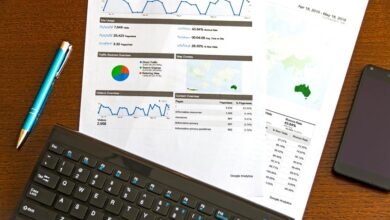Analyze Telephone Source On 3512476526, 3509028002, 3792869157, 3270447176, 3201520558, 3886568996

The analysis of telephone sources, specifically the numbers 3512476526, 3509028002, 3792869157, 3270447176, 3201520558, and 3886568996, reveals a spectrum of potential risks. Each number presents unique characteristics that may indicate legitimate communications or fraudulent activities. Understanding their origins and classifications is crucial. A closer examination may uncover patterns that inform user decisions on engagement, raising questions about the integrity of these calls and the need for precautionary measures.
Overview of Each Telephone Source
Telephone sources can be categorized into several distinct types, each serving unique purposes and functionalities within communication frameworks.
Among these, scam detection systems and caller verification tools play critical roles. The former identifies potential fraudulent activities through advanced algorithms, while the latter authenticates the identity of callers to enhance security.
Together, they foster a transparent communication environment, empowering users with essential information for informed decision-making.
Potential Risks Associated With These Numbers
While scam detection systems and caller verification tools aim to enhance communication security, they also highlight the potential risks associated with certain telephone numbers.
The numbers in question may pose significant privacy concerns, as they can facilitate unauthorized access to personal information.
Increased scam awareness is crucial, as individuals may inadvertently expose themselves to financial loss or identity theft through these telephonic interactions.
Origins and Identification of the Numbers
The origins of telephone numbers can be traced to a systematic allocation process established by telecommunications regulatory bodies.
These entities assign number patterns that categorize caller types, aiding in the identification and analysis of incoming calls. The structured format facilitates tracking and managing communications, offering insights into the nature of calls received from various sources, thus enhancing user autonomy in decision-making.
Recommendations for Handling Unknown Calls
How can individuals effectively manage unknown calls in an increasingly complex telecommunications landscape?
Implementing call screening techniques is essential. This includes utilizing smartphone features that identify or block unknown callers, as well as employing third-party applications designed for call protection.
Individuals should also be cautious about engaging with unknown callers, prioritizing their privacy and security in a digitized communication environment.
Conclusion
In conclusion, the analysis of the telephone numbers 3512476526, 3509028002, 3792869157, 3270447176, 3201520558, and 3886568996 underscores the importance of vigilance in call screening. For instance, a hypothetical case where a user receives a call from 3792869157, only to discover it is a phishing attempt, highlights the risks inherent in unknown calls. By employing robust verification tools, individuals can significantly mitigate the potential for fraud and protect their personal information from malicious actors.




